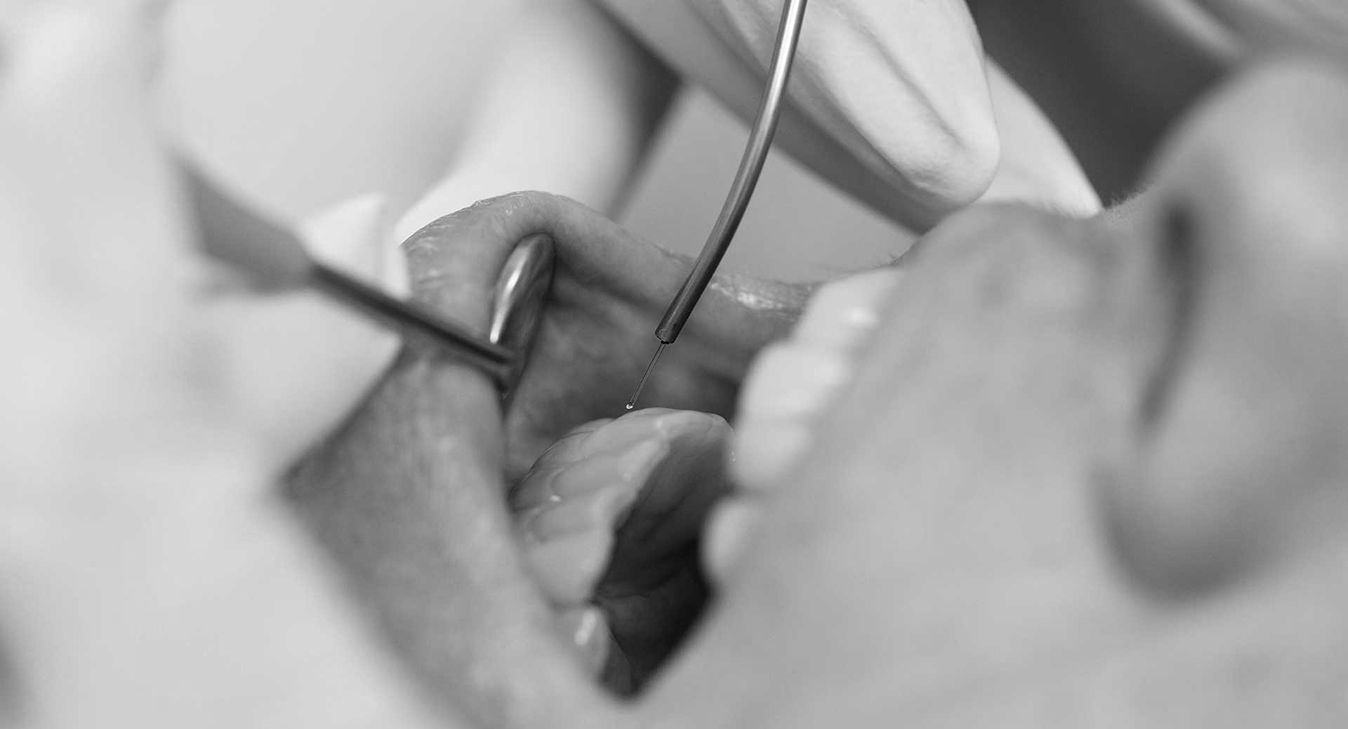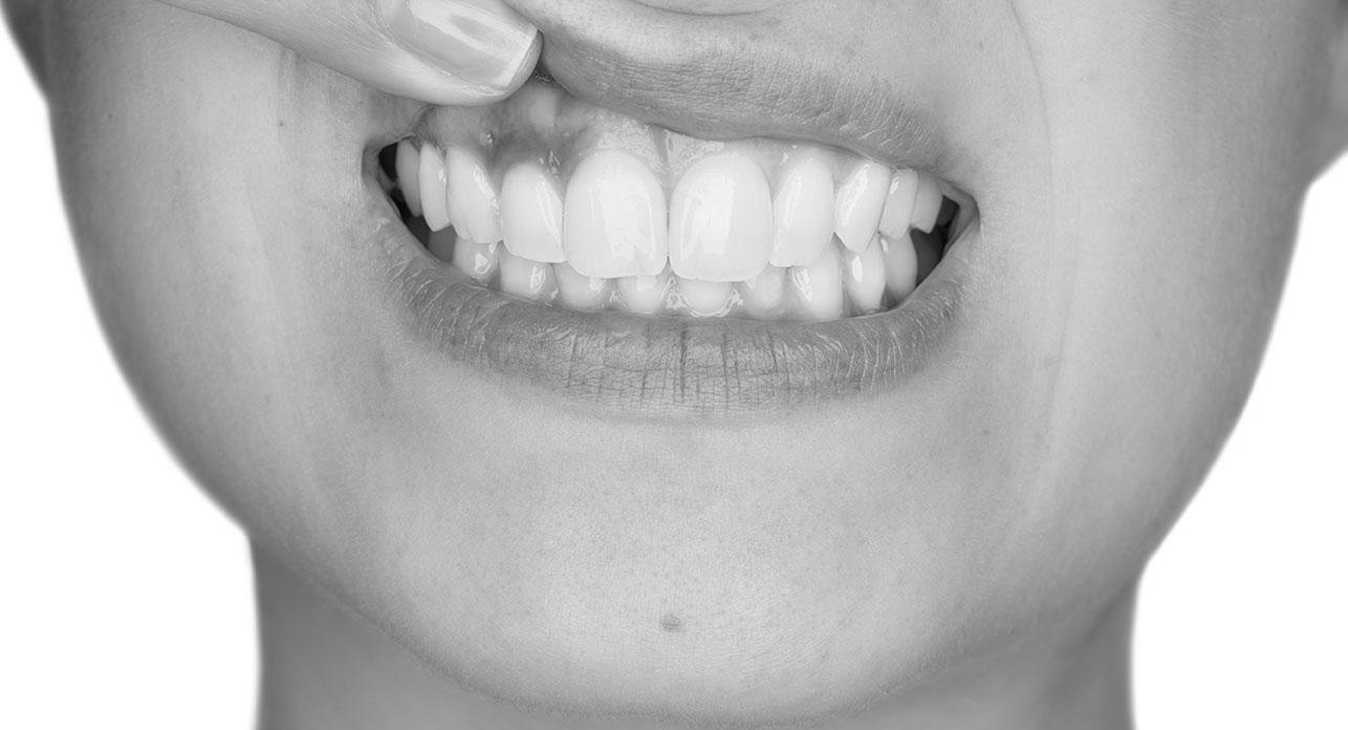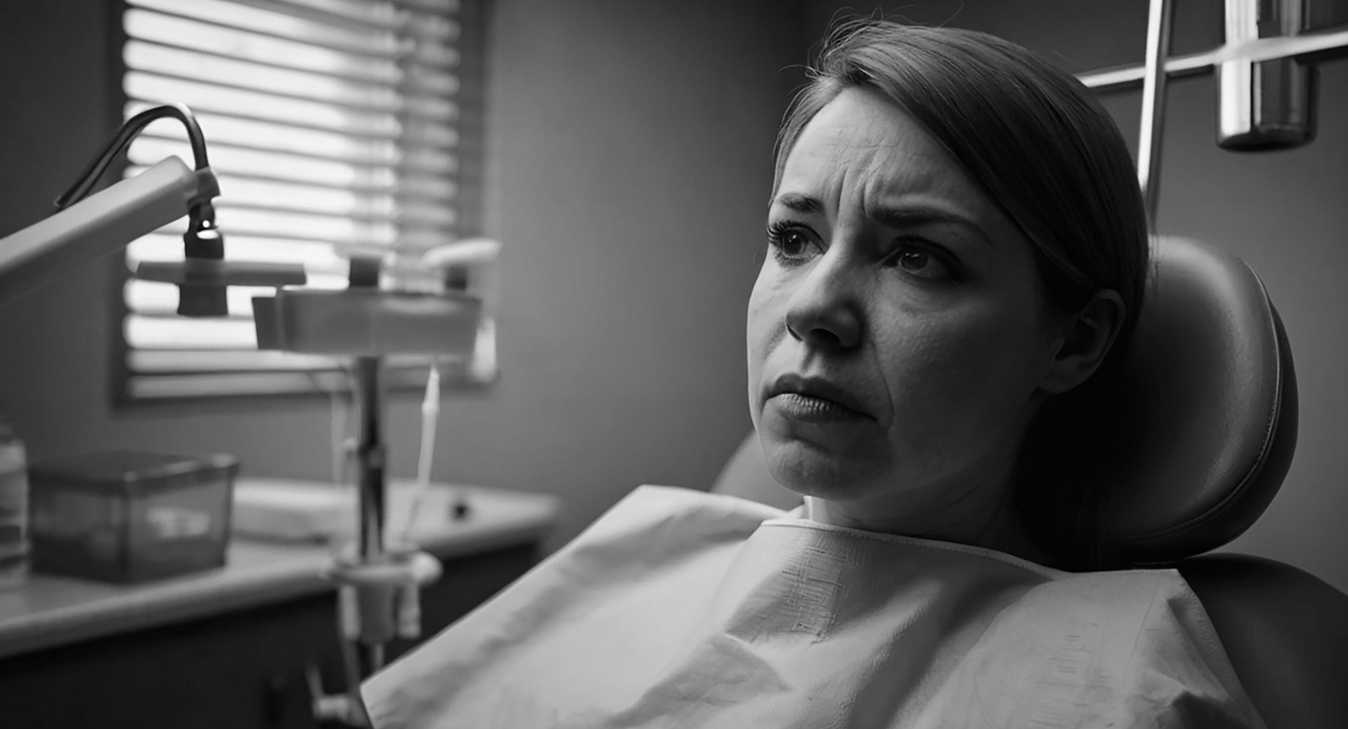What is a Gum Disease Treatment?
Gum disease treatment involves various methods to control infection and prevent further damage. The primary treatments include professional dental cleanings, scaling and root planing to remove tartar and bacteria below the gums, and antibiotic medications to reduce bacterial growth. In severe cases, surgical procedures such as flap surgery or bone grafting may be necessary to restore supportive tissues. Maintaining good oral hygiene practices and regular dental check-ups are essential to prevent the progression of gum disease.
What You Need to Know When it Comes to Gum Disease Abroad.
If you’re considering seeing a periodontist in Argentina — especially in Buenos Aires — this page is a helpful place to begin. It offers an overview of common treatments and what to keep in mind when choosing a clinic abroad.
- Early Detecting Gum Disease
- Types of Periodontal Diseases
- Costs of Treating Gum Disease


Periodontal Diseases:
Key To Early Treatment.
Gum disease affects the soft tissue and bone that support your teeth. Catching it early can help prevent tooth loss and other complications. It’s also linked to overall health, so timely care supports more than just your smile. You’ll find more detail in our full article.
Four Different Types of Periodontal Diseases.
Periodontal disease is usually classified into four stages. In the next section, we’ll briefly explain these types and outline general treatment approaches to help you understand what care might involve.
Gingivitis
Gingivitis is the earliest and mildest form of gum disease. It causes red, swollen gums that may bleed when brushing or flossing. Since it hasn’t yet affected the bone, it can often be reversed with early care. It’s usually caused by plaque buildup along the gumline due to poor oral hygiene.
Treatment Approach:
Professional cleaning helps remove plaque and tartar, while daily brushing, flossing, and using mouthwash support gum health at home. Regular dental check-ups help catch gingivitis early and keep it from progressing.
Chronic Periodontitis
This form of gum disease develops over time and can cause the gums to recede, bone to deteriorate, and teeth to loosen. It’s most common in adults and tends to progress slowly, but without treatment, it can seriously damage the support structures around your teeth.
Treatment Approach:
Deep cleaning below the gumline (scaling and root planing) is usually the first step. Some clinics may also use antibiotics, and in more advanced cases, procedures like flap surgery or bone grafting may be recommended to restore lost tissue.
Aggressive Periodontitis
Unlike chronic cases, this type progresses quickly and can cause severe bone loss in a short time. It’s often seen in younger patients and may run in families. Teeth may become loose early on, even without widespread plaque buildup.
Treatment Approach:
More frequent deep cleanings, targeted antibiotic therapy, and sometimes surgery are used to help manage progression. Because this form advances fast, early detection and consistent follow-up care are especially important.
Systemic Periodontitis
This form of gum disease is linked to underlying health conditions, such as diabetes or heart disease, and can worsen inflammation throughout the body. It’s important to see a dentist familiar with how oral and overall health are connected.
Treatment Approach:
Management often includes deep cleanings, antibiotics, and coordination with your general healthcare provider. Treating both the gum condition and the related health issue supports better long-term outcomes.
Necrotizing Periodontitis
This is a severe and painful form of gum disease where tissue and bone begin to break down. It’s often associated with a weakened immune system, extreme stress, or malnutrition. Ulcers and rapid gum destruction are common signs.
Treatment Approach:
Urgent care is often needed. This may include removal of dead tissue, antibiotics, and pain management. A combination of dental and medical support helps reduce symptoms and prevent further damage.
Three Types of Gum Disease Treatments.
The treatment types are already discussed briefly in the previous section. Here we outline them in more detail to give more info.
Non-Surgical Treatments
When gum disease is still in its early or moderate stages, there’s often no need for surgery. We usually start with simpler, non-surgical treatments that focus on stopping the infection, calming the gums, and giving everything a chance to heal naturally. Below are a few of the most common approaches — just to give you a sense of what might come up during your treatment.
Scaling and Root Planing:
This is what we call a deep cleaning. We carefully remove plaque and tartar from around the teeth and just under the gumline. Then, we smooth the root surfaces so the gums can reattach more easily. It helps reduce inflammation and gives the gums space to recover.
Antibiotic Therapy:
Sometimes we’ll add antibiotics to help manage bacteria in the gums. These might come in the form of a mouth rinse, a gel placed into the gums, or oral medication. It’s often used alongside a deep cleaning to support healing.
Benefits and Comfort:
The nice thing about these treatments is that they’re gentle and don’t usually require much recovery time. Most people can go back to their regular routine right away. They’re designed to calm things down and give your gums the support they need to get healthy again.
Surgical Treatments
If gum disease has progressed a bit further, non-surgical treatments might not be enough. That’s when we look at surgical options — not as a last resort, but as a way to repair damage and protect your teeth for the long run.
Gum Graft Surgery:
If your gums have pulled away from your teeth, we might recommend a graft. This involves adding a small bit of healthy tissue — often from another part of your mouth — to rebuild areas that have receded. It helps protect the roots and restore your natural gum line.
Flap Surgery:
With flap surgery, we gently lift the gums to clean deep areas that aren’t reachable with regular tools. After cleaning, we reposition the gums so they fit better around the teeth. This helps reduce the size of the pockets where bacteria like to hide.
Bone Grafts:
In more advanced cases, bone loss can occur around the teeth. A bone graft helps rebuild that support using material from your own body, a donor, or a synthetic source. It can make a big difference in stabilizing the teeth and, if needed later, preparing the area for implants.
Benefits and Comfort:
These procedures sound more intense, but with modern techniques and good pain management, they’re usually very manageable. Most people are surprised by how smooth the recovery is. And restoring healthy gum and bone tissue can make a big difference in the long run.
Advanced Techniques
For more complex cases, we might recommend advanced procedures that combine the treatments mentioned above. These are designed to rebuild what’s been lost and create a healthier, more stable foundation for your teeth.
Gum Graft Surgery:
If you’ve lost gum tissue, this treatment adds a layer of healthy tissue to protect the roots and support healing. It’s a straightforward way to restore balance and prevent further damage.
Flap Surgery:
This is one of the most common surgical approaches. It gives us access to clean under the gums where bacteria can build up and cause damage. Once everything’s clean, the gums are carefully repositioned to help with healing and easier maintenance.
Bone Grafts:
When the bone around a tooth has been damaged or lost, a graft can help rebuild it. This doesn’t just support the teeth — it can also be a key step if you’re considering future treatments like implants.
Benefits and Comfort:
Even though these procedures are more involved, they’re meant to protect your smile and stop things from getting worse. We focus on making sure you’re comfortable and fully supported throughout the process, so you can recover smoothly and feel confident in your care.
Periodontal Treatment Procedure Explained.
If you’re exploring treatment for gum disease in Argentina, it’s natural to want a clearer picture of how the process works. This section offers a simple overview to help you feel more informed before your first intake. You can also watch our short video for a general explanation of what the experience might involve.
Steps Before, During and After
Your Gum Disease Treatment.
This section gives you a simple walk-through of what usually happens before, during, and after gum disease treatment. Knowing the steps can help you feel more prepared and make the experience easier to navigate.
First Intake and Consultation
Your first visit, after a free online intake, starts with a full check-up of your gums and the bone around your teeth. The periodontist may review your medical history, take X-rays, and gently check your gums for signs of recession or pockets. You’ll also have time to talk about any symptoms you’re experiencing. Based on this, the clinic will explain your diagnosis and walk you through possible treatment options.
Treatment Plan Development
After the assessment, you’ll receive a personalized treatment plan. It outlines the procedures needed — whether it’s a deep cleaning, antibiotics, or surgery — along with the timeline and estimated costs. The plan is designed around your specific needs so you know what to expect and can move forward with clarity and confidence.
Steps During Non-Surgical
For early to moderate gum disease, non-surgical care is often the first step. This usually includes scaling and root planing — a deep cleaning that removes plaque and tartar from around the teeth and under the gums. Sometimes antibiotics are added to help with healing. These gentle treatments help stop the disease from progressing and give your gums a chance to recover.
Steps During Surgical
If the condition is more advanced, surgery may be needed. Gum grafts help cover exposed roots, flap surgery allows for deep cleaning under the gums, and bone grafts rebuild lost bone. These procedures aim to stabilize your teeth and restore healthy tissue. Thanks to modern techniques and local anesthesia, they’re more comfortable than many people expect — and recovery is often smoother, too.
During Advanced Techniques
Some clinics use newer approaches like laser therapy or regenerative treatments. Lasers can target problem areas with precision and may reduce discomfort. Other techniques, like guided tissue regeneration or growth factors, help the body rebuild lost gum or bone. These advanced methods can be especially helpful in more complex cases.
Post-Treatment Care
What you do after treatment matters just as much as the treatment itself. Regular cleanings, check-ups, and good home care — like brushing, flossing, and using a mouth rinse — are key to keeping your gums healthy. Avoiding tobacco and eating well can also support healing. With the right habits, you can protect the results and keep your mouth in good shape long term.
Comparing Costs of Gum Disease Treatments.
Argentina vs. U.S.
Many people find that treatment costs in Argentina, including in Buenos Aires, are noticeably lower than in countries like the U.S. Below, you’ll find general price indications for common periodontal procedures to help you explore your options with more clarity.
| Gum Disease Treatment Procedure | US & Canada | Argentina |
|---|---|---|
| Initial Consultation | $100-$250 | $50-$100 |
| Dental X-rays | $50-$200 | $20-$50 |
| Scaling and Root Planing (Per Quadrant) | $200-$500 | $80-$200 |
| Laser Gum Therapy (Optional) | $300-$1,000 | $150-$500 |
| Antibiotic Treatment (If Needed) | $50-$300 | $20-$100 |
| Surgical Gum Treatment (Flap Surgery) | $1,000-$3,000 | $500-$1,500 |
| Follow-Up and Maintenance | $100-$300 | $50-$150 |
| Total Cost of Gum Disease Treatment | $1,800-$5,550 | $870-$2,600 |

Managing Your Anxiety For Dental Treatments.
It’s completely normal to feel a bit nervous about gum treatment. Simple things like deep breathing or calming thoughts can help you stay relaxed. If your anxiety feels stronger, some clinics may offer sedation options — something you can discuss during your intake. Being informed about the process often helps make each visit feel more manageable. You can also check out our anxiety guide for more tips.
Choosing a Dental Clinic
In Buenos Aires for Gum Treatments.
Gum treatments are typically done by periodontists — dentists with extra training in gum health. Choosing someone with the right experience matters. Our guide explains what to look for when selecting a periodontist abroad.
General Guide
Choosing a Clinic Abroad
Indications of a Professional Clinic.
Why it’s important: Choosing the right clinic — whether in Buenos Aires, Mendoza, or elsewhere — can make all the difference. A place with experienced periodontists and a good reputation helps ensure your treatment is both safe and effective. And when the environment feels calm and supportive, it naturally helps reduce stress and makes the whole experience more comfortable.
What to look for: Look for a clinic where periodontists have solid training and hands-on experience with different types of gum treatments. It’s a good sign if they offer personalized care — things like tailored treatment plans, virtual intakes, and clear support before and after the procedure. Also, it’s helpful if they’re available for follow-up questions or emergencies, just in case something comes up.
Essential to remember: Getting good care isn’t just about the treatment itself — it’s about the full experience. A clinic that offers follow-up support and makes you feel welcome from the start can really help your recovery go more smoothly. It’s worth choosing a place where you feel listened to and comfortable throughout the process.
What Makes a Good Periodontist?
Why it’s important: When it comes to treating gum disease, working with a trained periodontist really matters. These are specialists who’ve had extra education and experience in treating gum issues — especially the more complex ones. Having the right person by your side can help avoid complications and give you the best shot at long-term oral health.
What to look for: It’s worth checking if the periodontist has completed a formal residency in periodontics. Also, look for someone who uses up-to-date technology like digital X-rays or lasers — these tools help make the treatment more precise. If the clinic communicates clearly in English and offers a clear aftercare plan, it usually makes the whole experience much smoother.
Essential to remember: The procedure is just one part of the journey. What happens afterward is just as important. A good periodontist will guide you through recovery and make sure everything is healing the way it should. So it’s not just about training — it’s about how supported you feel throughout the whole process.
- Verify the Accreditations
- Check the Years of Experience
- Check Patients Reviews
- Be Keen on Clinic Hygiene
Perio Treatments in Argentina: Crucial Topics.
In this section we will list the most important topics to consider before a periodontal treatment and explained them as well in a short video for your convenience.
Clear communication
When you’re undergoing periodontal treatment abroad, being able to clearly understand what’s happening at each stage really helps. Choosing a clinic with English-speaking staff makes it easier to ask questions, follow instructions, and feel confident about your care. Good communication goes a long way in reducing stress and helping you feel more at ease throughout the process.
Personalized Care
Gum health varies from person to person, so your treatment plan should reflect your specific needs. A tailored approach — based on a detailed assessment and regular follow-ups — helps ensure you’re getting the right care for your situation. Clinics that take this time often provide a smoother, more reassuring experience.
Advanced Equipment Used
Advanced tools like digital X-rays, 3D scans, and laser treatments allow for more accurate and comfortable periodontal procedures. These technologies can also reduce healing time. Knowing your clinic is equipped with up-to-date tools offers extra peace of mind and can make your treatment feel easier to manage.
Expertise and Training
Periodontal care often involves treating delicate areas below the gumline. That’s why it’s essential to be seen by a periodontist — a specialist with extra training in gum disease. Choosing someone with a strong track record in handling complex cases helps reduce risks and supports the best possible outcome.
Reputation of Periodontists
Feeling confident in your clinic starts with knowing they’re honest and upfront — about pricing, treatment options, and what to expect. Reviews from other international patients can help you understand how the clinic operates. A transparent, patient-centered approach is a good sign that you’re in caring hands.
Safety Protocols and Hygiene
Your safety during treatment depends a lot on the clinic’s hygiene standards. A clean, well-maintained space that follows strict sterilization protocols reduces the risk of infection and supports a smooth recovery. It’s always worth asking how the clinic handles infection control — especially for periodontal procedures that involve deep cleaning or surgery.
Why People Contact Their Periodontist
Via Teeth Traveler.
Many patients choose care through us because the clinics we work with offer a well-coordinated approach. When needed, specialists work together to help make your experience smoother and more comfortable.
Discover Our
Free Extra Services
The Prices of Our
Periodontal Treatments Explained.
Below is an overview of common periodontal treatments and indicative prices from the dentists in our network. It gives you a general idea of what to expect. A fixed-price quote is always shared for free before starting anything.
Perio Regular
Treatment duration between 1-2 hoursSame Day Treatment
-
Check | Scan | Cleaning
-
Periodontal Treatment*
-
Online Aftercare
-
Digital Treatment Document
-
100% Covered
*Regular Gum Treatment (1 sector of 6)
A Direct Agreement with The Dentist
Perio Smile
Treatment duration between 2-4 hoursSame Day Treatment
-
Perio Regular
-
Essential Care Treatment*
-
Professional Whitening
-
Follow-up Dentistry at Home
-
Partially Covered
*Includes Fillings for Small Caries
A Direct Agreement with The Dentist
Perio Makeover
Treatment duration between 3-5 hoursSame Day Treatment
-
Perio Regular
-
Essential Care Treatment
-
Smile Makeover Light*
-
Follow-up Dentistry at Home
-
Partially Covered
*Includes a Whitening and Bondings
A Direct Agreement with The Dentist
Reviews on
Gum Disease Treatments.
Periodontal treatments often involve longer care, so people we’ve connected with clinics can share helpful insights. Feel free to explore their experiences to support your own decision.





Plan Your Intake. Online. For Free.
If you’re dealing with gum-related concerns, you can schedule a free online intake with one of the clinics in our network. One of the specialist can review your situation and, if needed, help arrange an in-person appointment at the clinic.
Frequently Asked Questions (FAQs) on Gum Treatments Abroad.
In this section we highlighted the most common questions about periodontal treatments and briefly answered them for you. In case your question is not present, please contact one of the periodontist for free to help you out with your inquiry.
What is the quickest way to get rid of gum disease?
The fastest way to eliminate gum disease is to visit a dentist for a professional cleaning and maintain excellent oral hygiene at home. Regular brushing, flossing, and using an antiseptic mouthwash can effectively manage and reverse early-stage gum disease (gingivitis) before it progresses to more severe periodontal issues.
What is the best treatment for gum disease?
The most effective treatment for gum disease is scaling and root planing. This deep cleaning procedure involves removing plaque and tartar from teeth surfaces (scaling) and smoothing the roots (planing) to prevent bacteria from reattaching. This treatment is particularly recommended for mild to moderate cases of gum disease, helping to restore oral health.
How much does it cost to get rid of gum disease?
In Buenos Aires, Argentina, the cost to treat gum disease typically ranges from $800 to $2,500, depending on the severity and required procedures. Initial treatments like scaling and root planing generally cost less, while more advanced treatments, such as surgery, pocket reduction, or bone grafting, can be more expensive.
In comparison, overall costs for treating gum disease elsewhere can range from $1,700 to $8,000, with teeth extractions averaging $200 to $300 per tooth. This variation in pricing reflects differences in healthcare costs, local economies, and the specific treatments required.
Can I reverse gum disease without a dentist?
Yes, early-stage gum disease, known as gingivitis, can often be reversed without a dentist by practicing good oral hygiene. This includes brushing twice daily with fluoride toothpaste, flossing regularly, and using an antibacterial mouthwash to reduce bacteria and inflammation. However, advanced gum disease typically requires professional treatment.
What kills gum disease naturally?
Salt water is an effective natural remedy for gum disease. It acts as a disinfectant, helping to eliminate bacteria and reduce inflammation in the gums. Rinsing your mouth with warm salt water can help heal gum tissue and alleviate symptoms of gum disease. Other natural remedies include using tea tree oil, which has antibacterial properties, and applying aloe vera gel to soothe inflamed gums.
What toothpaste reverses periodontal disease?
Oral-B Pro-Expert Clinic Line Gum Protection is a toothpaste clinically proven to help reverse periodontal disease. This toothpaste offers the highest level of protection against plaque-causing bacteria, which is essential in treating and preventing gum disease. Regular use can significantly improve gum health within a month.
What antibiotic kills gum disease?
Tetracycline antibiotics, including tetracycline hydrochloride, doxycycline, and minocycline, are the primary drugs used in periodontal treatment. These antibiotics have potent antibacterial properties, help reduce inflammation, and block collagenase, a protein that destroys connective tissue, making them effective in treating gum disease.
Ask Your Question
At Teeth Traveler, we’re here to share helpful information — not to offer medical advice. This information on this page is for general informational purposes only and does not constitute medical advice, diagnosis, or treatment. Teeth Traveler is not a healthcare provider and does not offer medical services. The clinics listed on our platform operate independently and are responsible for the care they provide. While we aim to offer helpful guidance, readers are encouraged to consult directly with licensed dental professionals before making healthcare decisions or pursuing treatment abroad. No rights may be derived from the information provided on this page. For more details, check our disclaimer and terms of use.
